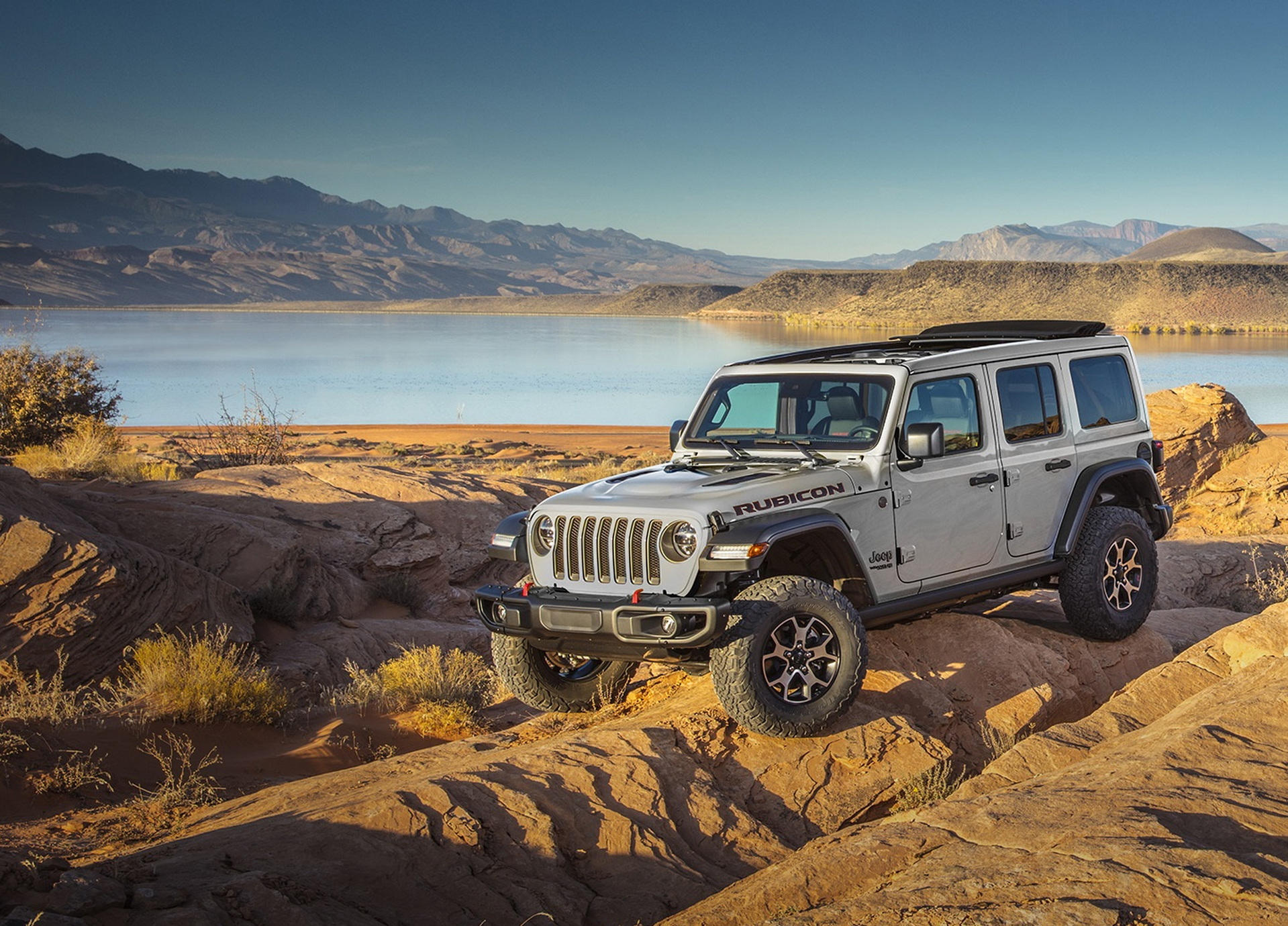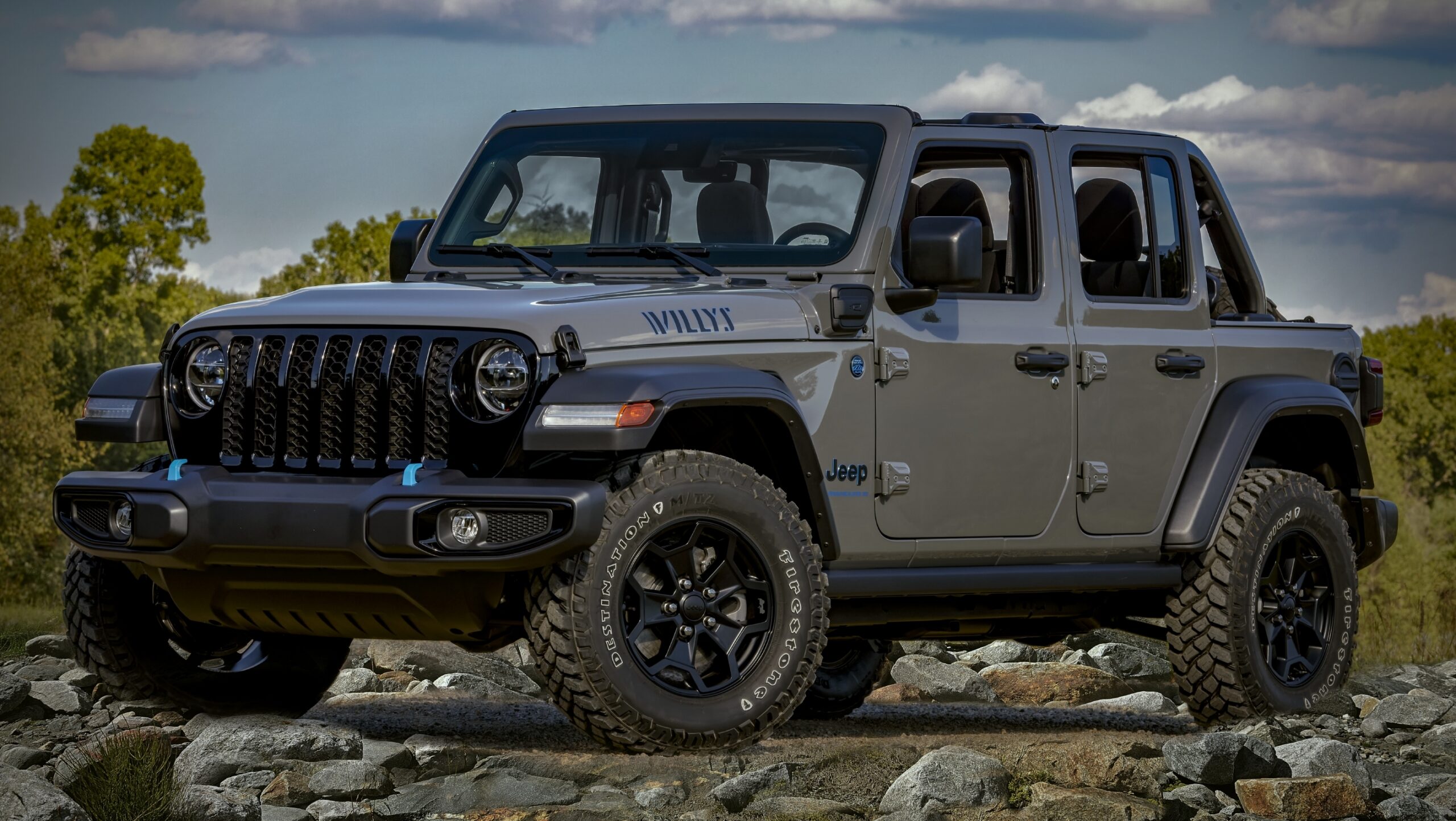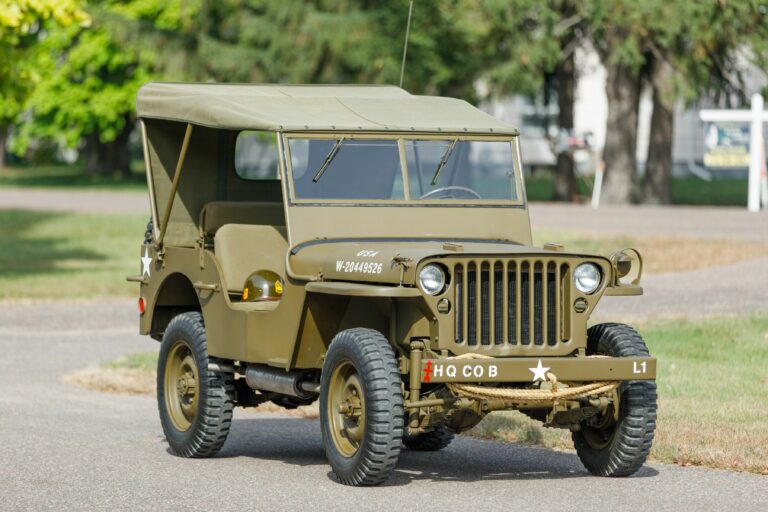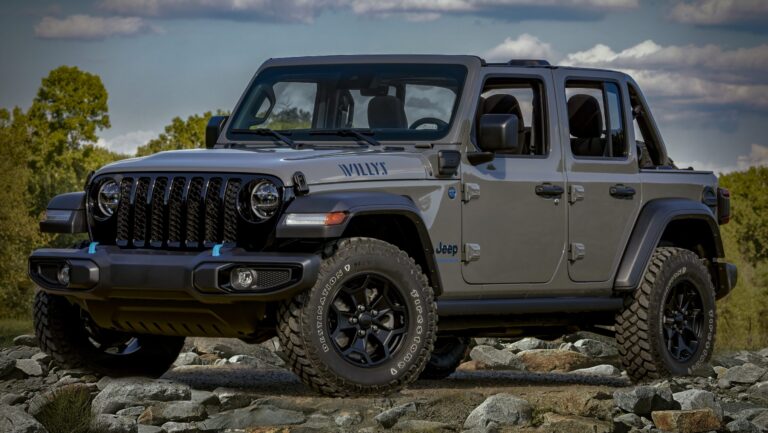Jeep Cherokee III Wiki: A Comprehensive Guide to the KJ/Liberty Generation
Jeep Cherokee III Wiki: A Comprehensive Guide to the KJ/Liberty Generation jeeps.truckstrend.com
The term "Jeep Cherokee III Wiki" might initially conjure images of a digital compendium, a dedicated online resource brimming with facts and figures. In essence, that’s precisely what this article aims to be: a comprehensive, wiki-style exploration of the third generation Jeep Cherokee, known globally as the Jeep Cherokee KJ or, more commonly in North America, the Jeep Liberty. This distinct model, produced from 2002 to 2007, marked a significant departure from its XJ predecessor, embracing a more modern design, independent front suspension, and a renewed focus on both on-road comfort and off-road capability.
For enthusiasts, prospective buyers, and current owners, understanding the nuances of the Jeep Cherokee III (KJ/Liberty) is crucial. This "wiki" serves as your definitive guide, delving into its history, specifications, common issues, maintenance tips, and practical advice, transforming complex information into an easily digestible format. Whether you’re researching a potential purchase, troubleshooting a persistent problem, or simply seeking to deepen your appreciation for this unique Jeep, this comprehensive overview is designed to be your go-to resource.
Jeep Cherokee III Wiki: A Comprehensive Guide to the KJ/Liberty Generation
Understanding the Jeep Cherokee III (KJ/Liberty) Legacy
The Jeep Cherokee III, or KJ, represents a pivotal moment in the Cherokee lineage. Following the immensely popular and long-running XJ Cherokee, Chrysler faced the challenge of modernizing the compact SUV while retaining its iconic off-road prowess. The result was the Liberty (KJ), launched in 2001 for the 2002 model year in North America, and continuing the "Cherokee" nameplate in other international markets.
Key departures from the XJ included:
- Unibody Construction with Integrated Frame Rails: While still a unibody, it incorporated significant structural elements for improved rigidity and crash safety.
- Independent Front Suspension (IFS): A controversial move for some purists, the IFS significantly improved on-road ride comfort and handling, albeit with some trade-offs in extreme articulation compared to solid axles.
- Rounded Styling: Gone were the sharp, angular lines of the XJ, replaced by a softer, more contemporary aesthetic, including Jeep’s signature seven-slot grille and round headlights.
- Focus on Safety and Refinement: The KJ introduced more airbags, improved braking systems, and a more refined interior, catering to a broader market seeking a versatile daily driver.
![]()
Despite initial skepticism from some traditionalists, the KJ/Liberty quickly found its footing, appealing to families and adventurers alike who valued its blend of utility, comfort, and undeniable Jeep DNA. It carved out its own niche, proving that a modern Jeep could still be a highly capable off-road machine while offering a more civilized experience on pavement.
Key Features and Specifications
The Jeep Cherokee III (KJ/Liberty) offered a range of powertrains and driveline options, allowing buyers to tailor the vehicle to their specific needs.
- Engine Options:
- 2.4L PowerTech I4 (150 hp, 165 lb-ft torque): Standard in Sport models, this four-cylinder offered adequate power for daily driving and reasonable fuel economy.
- 3.7L PowerTech V6 (210 hp, 235 lb-ft torque): The most popular engine, standard in Limited and Renegade trims, providing robust performance for towing and off-roading.
- 2.8L VM Motori CRD Diesel (160 hp, 295 lb-ft torque): Available in certain markets (including North America from 2005-2006), this turbo-diesel offered impressive torque and fuel efficiency, making it a highly sought-after option.

- Transmission Options:
- 5-Speed Manual: Available with both 2.4L and 3.7L engines in early models.
- 4-Speed Automatic (42RLE): The most common automatic transmission, paired with the 3.7L V6.
- 5-Speed Automatic (545RFE): Used with the 2.8L CRD diesel.
- 4×4 Systems:
- Command-Trac® (Part-Time 4WD): Standard on most 4WD models, offering 2WD, 4WD High, and 4WD Low. Ideal for those who primarily drive on pavement but need robust off-road capability.
- Selec-Trac® (Full-Time 4WD): Available on higher trims, this system allowed for full-time 4WD on paved surfaces, as well as part-time 4WD High and 4WD Low, providing enhanced traction in varying conditions.

Beyond the powertrain, the KJ featured a coil-sprung suspension system, rack-and-pinion steering, and four-wheel disc brakes with ABS. Its compact dimensions (174.6 inches long, 71.6 inches wide) made it maneuverable in urban environments while still offering respectable ground clearance and approach/departure angles for trail use.
Trim Levels and Editions
Throughout its production run, the Jeep Cherokee III (KJ/Liberty) was offered in several distinct trim levels, each catering to different preferences and budgets.
- Sport: The base model, offering essential features, rugged cloth upholstery, and often equipped with the 2.4L I4 or the 3.7L V6. It was a no-frills, capable workhorse.
- Limited: The premium trim, featuring leather upholstery, power seats, automatic climate control, alloy wheels, and a more refined interior. It aimed for a balance of luxury and capability.
- Renegade: Designed for the more adventurous buyer, the Renegade stood out with its unique flatter hood, exposed rivets on the fender flares, larger tires, and often included off-road-oriented features like skid plates and Selec-Trac 4WD.
- Rocky Mountain Edition: A popular special edition that combined elements of the Sport and Limited, often including unique wheels, interior accents, and some premium features at a competitive price.
- Columbia Edition: Another special edition, often based on the Sport trim, featuring unique badging, wheels, and sometimes enhanced interior amenities.
Each trim offered various option packages, allowing for further customization, from sunroofs and premium sound systems to tow packages and upgraded skid plate protection.
Owning and Maintaining the KJ/Liberty
Proper maintenance is key to the longevity and reliability of any vehicle, and the Jeep Cherokee III (KJ/Liberty) is no exception. Due to its age, many KJs are now well into their second or third decade of service, making diligent upkeep even more critical.
- Regular Fluid Checks and Changes: Adhere strictly to the owner’s manual for oil, transmission fluid, differential fluid, transfer case fluid, and coolant changes. The 42RLE automatic transmission, in particular, benefits from regular fluid and filter changes.
- Suspension and Steering Components: The independent front suspension (IFS) and rack-and-pinion steering mean more components susceptible to wear than a solid axle. Pay close attention to ball joints (upper and lower), tie rod ends, control arm bushings, and sway bar links. These are common wear items that can affect handling and safety.
- Brakes: Regularly inspect brake pads, rotors, and calipers. The KJ’s braking system is generally robust but will wear with use, especially if towing or off-roading.
- Tires: Rotate tires every 5,000-7,500 miles and maintain proper inflation for even wear and optimal fuel efficiency.
- Rust Prevention: KJs, particularly those in areas with road salt, are prone to rust, especially around the rocker panels, wheel wells, and frame components. Regular washing and undercoating can help mitigate this.
- Engine Specifics:
- 3.7L V6: Generally reliable, but watch for valve seat issues (less common in later models), thermostat failures, and oil pressure sensor issues.
- 2.8L CRD Diesel: Known for injector issues if maintenance is neglected, timing belt changes are critical, and the EGR system can be problematic. However, a well-maintained CRD is a powerhouse.
DIY enthusiasts will find many common maintenance tasks relatively straightforward, with ample online resources and aftermarket parts available.
Common Issues and Solutions
Like any vehicle, the Jeep Cherokee III (KJ/Liberty) has its quirks and common failure points that prospective buyers and current owners should be aware of.
- Window Regulators: This is arguably the most infamous KJ issue. The plastic clips on the power window regulators are prone to breaking, causing windows to fall into the door.
- Solution: Aftermarket metal-reinforced regulators are available and highly recommended. It’s a relatively easy DIY fix.
- Ball Joints (Front Lower and Upper): Premature wear of the front ball joints is a common problem, leading to clunking noises, poor alignment, and unsafe driving conditions.
- Solution: Regular inspection is vital. Replace worn ball joints promptly. Upgraded aftermarket units are available for increased durability.
- Rear Control Arm Bushings: The rear upper and lower control arm bushings can wear out, causing clunking and rear-end instability.
- Solution: Replacement of the bushings or entire control arms.
- Blend Door Actuator (HVAC): Failure of the blend door actuator can lead to inconsistent heating/cooling or air blowing only from certain vents.
- Solution: Replacement of the actuator, which can be a challenging DIY depending on location.
- Front Differential Bushings: Worn front differential bushings can cause clunking or vibration, especially under acceleration.
- Solution: Replace the bushings.
- Cooling System: Radiators can develop leaks, and thermostats can fail. Keep an eye on coolant levels and temperature gauges.
- Solution: Timely replacement of components.
- Transmission Shudder (42RLE): Some owners experience a shudder, often related to torque converter lock-up.
- Solution: Regular transmission fluid and filter changes are critical. Sometimes a software update or torque converter replacement is needed.
A pre-purchase inspection by a trusted mechanic is highly recommended when considering a used KJ/Liberty to identify these and other potential issues.
Off-Road Capability and Modifications
Despite its IFS, the Jeep Cherokee III (KJ/Liberty) retains a respectable degree of off-road capability, especially in Renegade trim or when equipped with Selec-Trac. Its relatively short wheelbase and solid ground clearance make it nimble on trails.
- Assessing Capability: Stock KJs can handle moderate trails, fire roads, and light rock crawling. The 4WD systems are robust, and the low range gearing is effective.
- Popular Modifications:
- Lift Kits: The most common modification. Various lift kits (from 1.5" to 4") are available, allowing for larger tires and increased ground clearance. This often involves replacing struts, springs, and sometimes control arms.
- Tires: Upgrading to more aggressive All-Terrain (A/T) or Mud-Terrain (M/T) tires significantly enhances off-road traction.
- Skid Plates: Aftermarket skid plates protect the vulnerable underside components (oil pan, transmission, transfer case, fuel tank).
- Rock Sliders: Protect the rocker panels from damage on rocky trails.
- Bumpers: Aftermarket bumpers can improve approach/departure angles and provide winch mounting points.
- Differential Lockers: For serious off-roaders, adding a locker to the rear differential (or both) vastly improves traction in extreme conditions.
The KJ/Liberty has a passionate community of off-roaders and modifiers who share knowledge and build ideas on forums and social media groups.
Practical Advice for Buyers and Owners
For those considering purchasing a used Jeep Cherokee III (KJ/Liberty), or for current owners looking to maximize their vehicle’s life, here’s some actionable advice:
- Buyer’s Checklist:
- Service History: Prioritize KJs with a well-documented maintenance history.
- Rust Inspection: Thoroughly check for rust, especially on rocker panels, frame rails, and suspension mounting points.
- Window Regulators: Test all power windows. If they’re slow or don’t work, factor in the cost of replacement.
- Suspension Noises: Listen for clunking or popping sounds during a test drive, especially over bumps, indicating worn ball joints or bushings.
- 4WD System: Engage 4WD High and Low to ensure they function smoothly.
- Diesel Specifics: If considering a CRD, ensure it has a good service history, especially regarding timing belt changes and injector health.
- Pre-Purchase Inspection: Always get an independent mechanic to inspect the vehicle.
- Cost of Ownership: Be prepared for typical maintenance costs associated with an older SUV. Parts are generally affordable and widely available. Fuel economy is moderate, especially with the V6.
- Community Engagement: Join online forums (e.g., JeepKJ.com, Liberty Owners Association) and local Jeep clubs. These communities are invaluable resources for advice, troubleshooting, and finding local mechanics specializing in Jeeps.
- Aftermarket Support: The aftermarket for the KJ/Liberty is robust, offering everything from basic replacement parts to serious off-road upgrades.
Used Market Value & Pricing for the Jeep Cherokee III (KJ/Liberty)
The market value of a used Jeep Cherokee III (KJ/Liberty) varies significantly based on year, mileage, trim level, overall condition, engine type, and geographical location. The table below provides a representative range, but actual prices will depend on individual vehicle specifics. These figures are estimates for private party sales in North America and should be used as a guide.
| Condition | 2.4L Sport (Early Years) | 3.7L Sport/Limited | 3.7L Renegade | 2.8L CRD Diesel (Any Trim) |
|---|---|---|---|---|
| Poor | $1,500 – $3,000 | $2,000 – $3,500 | $2,500 – $4,000 | $3,000 – $5,000 |
| Fair | $3,000 – $5,000 | $3,500 – $6,000 | $4,000 – $7,000 | $5,000 – $8,000 |
| Good | $5,000 – $7,000 | $6,000 – $9,000 | $7,000 – $10,000 | $8,000 – $12,000 |
| Excellent | $7,000 – $9,000+ | $9,000 – $12,000+ | $10,000 – $15,000+ | $12,000 – $18,000+ |
Notes:
- "Poor" Condition: Significant mechanical issues, major body damage, high mileage (200,000+ miles), rust. Suitable for parts or major restoration.
- "Fair" Condition: Needs some repairs, minor cosmetic flaws, moderate mileage (150,000 – 200,000 miles), some rust. Daily driver potential.
- "Good" Condition: Well-maintained, minor wear and tear, average mileage (100,000 – 150,000 miles), minimal rust. Ready to drive.
- "Excellent" Condition: Meticulously maintained, low mileage (under 100,000 miles), no significant issues, no rust. Rare to find.
- CRD Premium: The 2.8L CRD diesel models often command a significant premium due to their rarity, fuel efficiency, and torque.
Frequently Asked Questions (FAQ)
Q1: Is the Jeep Cherokee III (KJ/Liberty) a good off-roader?
A1: Yes, absolutely. While it has independent front suspension, it retains significant off-road capability, especially models with the Selec-Trac 4WD system, good ground clearance, and a short wheelbase. With proper tires and a modest lift, it can tackle challenging trails.
Q2: What are the most common rust spots on the KJ/Liberty?
A2: Common rust areas include the rocker panels, wheel wells (especially the rear), frame rails near the suspension mounting points, and sometimes around the rear hatch.
Q3: Which engine is best for the KJ/Liberty?
A3: For general use, the 3.7L V6 offers the best balance of power and reliability. For maximum torque and fuel efficiency, the 2.8L CRD diesel is excellent but requires more specialized maintenance and can be harder to find. The 2.4L I4 is adequate but often underpowered for a vehicle of this size.
Q4: Are parts readily available for the KJ/Liberty?
A4: Yes, parts are generally widely available and affordable, both from OEM sources and the aftermarket, due to the vehicle’s popularity and the long production run of its components across various Chrysler/Jeep models.
Q5: What’s the difference between the "Cherokee III" and "Liberty"?
A5: They are the same vehicle. "Jeep Liberty" was the name used exclusively in North America (USA and Canada), while "Jeep Cherokee" (or Cherokee KJ) was used in all other international markets for this generation.
Q6: What’s the biggest maintenance challenge with the KJ/Liberty?
A6: The infamous power window regulators are a persistent issue, but easily remedied with aftermarket metal-reinforced units. Beyond that, regular maintenance of the front suspension components (ball joints, bushings) is crucial due to their wear rate.
Conclusion
The Jeep Cherokee III, or KJ/Liberty, stands as a testament to Jeep’s adaptability and enduring spirit. It successfully navigated the transition from the rugged XJ era to a more refined, modern compact SUV, without sacrificing its core off-road identity. For many, it represents an ideal blend of daily drivability and weekend adventure capability, all wrapped in a distinctive package.
As a used vehicle, the KJ/Liberty offers exceptional value, providing robust utility and genuine Jeep DNA at an accessible price point. However, like any vehicle of its age, informed ownership is paramount. This "wiki" has aimed to equip you with the detailed knowledge needed to understand, maintain, and truly appreciate the Jeep Cherokee III. By leveraging the insights provided here, you can ensure your KJ/Liberty remains a reliable, capable, and enjoyable companion on every journey, whether on the asphalt or venturing off the beaten path.




